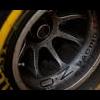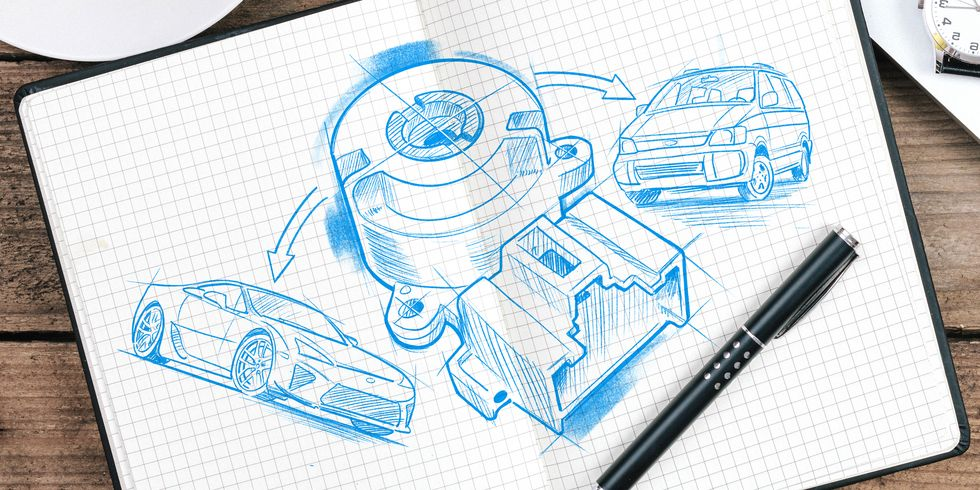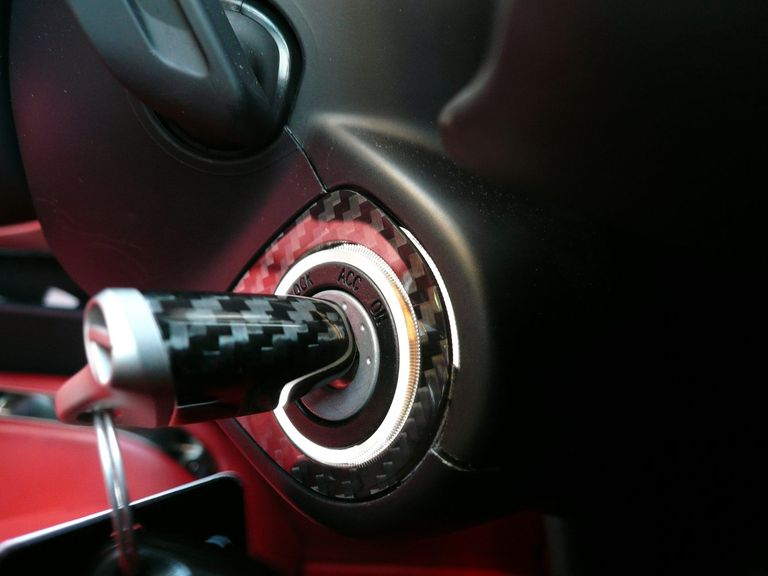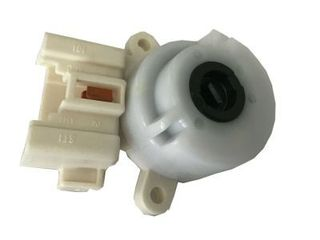Search the Community
Showing results for tags 'v10'.
-
https://www.roadandtrack.com/car-culture/a38212473/cheap-part-that-starts-every-lexus-lfa/ <The $7 Part That Starts Every Lexus LFA The Lexus LFA was one of the last supercars to use a physical key to start—and the ignition switch is shared with the lowly Tercel. The keyed ignition switch is nearly a thing of the past. Today, even base-model economy cars are showing up with keyless push-button start. But it wasn’t so long ago that even top-end cars had traditional metal keys. One of the most recent examples is the Lexus LFA, an otherworldly supercar built from cutting-edge carbon fiber-reinforced polymer and powered by one of the best sounding engines in the history of the automobile. And yet, to start that V-10 engine, you have to twist an ignition switch with utterly humble roots. Welcome to The Parts Department, where we follow basic car components to their strangest destinations. Toyota part No. 84450-12200 is a keyed ignition switch that was nearly ubiquitous in the automaker’s North American products starting in the mid-Nineties. It first appeared in the dashboards of cars like the Tercel and Paseo before spreading to the rest of the Toyota and Lexus lineups over the next decade and a half. At its peak, this ignition switch was used in almost every Toyota and Lexus made in the early 2000s, before slowly dropping off as push-button ignitions were introduced. Around 2010, it seemed like the switch was done for good in the Lexus lineup. The only Lexus left that used 84450-12200 was the aging SC 430, which was cancelled after the 2010 model year. But then our humble ignition switch reappeared in 2011, in the dashboard of Lexus’s new performance halo, the LFA. The screaming supercar’s key may have been adorned with milled metal and carbon fiber, but it operated the same tumbler found in the lowly Tercel. The LFA’s ignition key and tumbler were dressed up with carbon fiber, but underneath was the same old part. - LEXUS No. 84450-12200 had a much longer life in the Toyota lineup, appearing in the 4Runner up until this year (SmartKey push-button starting finally becomes standard equipment on the SUV for 2022). The ignition switch also appeared in the Scion iQ, TC and xB from 2005 to 2016, when the brand folded. Our friendly ignition switch retails for $114.53 from Toyota and Lexus dealers, but online OEM discount stores typically sell it for just under $80. Thanks to the fact that it’s shared across so many Toyota and Lexus models, the switch is a popular item in the aftermarket, with nearly a dozen companies offering their own versions to fit. The cheapest version, from Ultra-Power, costs less than $7. TOYOTA PARTS While the North American models that use this switch are all familiar names, overseas parts catalogs show that 84450-12200 was used in a wide array of Japanese and European-market vehicles. They range from quirky MPVs like the Toyota Picnic to utilitarian vehicles like the Townace. Built from 1985 to 2007, the cab-over-engine Townace, available as a van, pickup or cube truck, is about as far as you can get from the Lexus LFA supercar—which just goes to show that, even when Toyota was building an ultra-limited-production supercar with a mid-six-figure price tag, the company still relied on its extensive parts bin for reliable, mundane components. Toyota Townace Noah - TOYOTA Much like the manual transmission, traditional metal ignition keys are on their way out. The LFA may have been one of the last supercars with a conventional key-switch ignition. But coincidentally, Toyota was at the forefront of a recent revolution in ignition keys, as one of the first automakers to introduce laser-cut keys. This was one of many innovations that debuted on the 1990 Lexus LS 400, the car that launched the Lexus brand in North America. Toyota started slowly phasing out turn-key ignition in the United States in the mid-2000s. A push-button start switch appeared first on the 2004 Toyota Prius, then spread across the rest of the hybrid lineup. Today, Toyota’s start button is so widespread, it even appears in the company’s race cars: The Lexus RC F GT3 car that I work on as a pit crew member uses the same start button you’d see in a street-legal Lexus, and the Toyota GT86 TCA race car also has a production-style start button. In today’s supercars, you start the engine with a switch, button or knob, usually made of a high-quality metal or composite that echoes the advanced materials found in the body or chassis—and activated by a gorgeously designed electronic key fob in your pocket. It’s nice to know that, not very long ago, a simple and robust key-switch ignition was able to make its way from a humble economy car all the way to the ultimate halo of the Lexus brand.>
-
With the current R8 nearly halfway into its product life cycle, officials inside Audi are already discussing the new generation's powertrain. With electrification a large possibility, will we see the demise of its natural-aspirated V10 engine? Not so according a report by Autocar, which claimed that there are many in Audi that want to see it live on. The V10 is an icon, and a USP within the segment”, said Audi Sport’s managing director Oliver Hoffman. “With the current R8, our customers love this car. We are fighting for the V10, but [for the next-gen] it’s more or less a question of ICE or electrification, and which kind of engine is useful for it.” It also helps that Lamborghini is thought to remain committed to offering a V10 in the successor of the Huracan, which in turn a sister car to the R8. Hoffman added, “Lamborghini has to have a naturally aspirated engine, no other brand stands for NA like Lamborghini. We are working very close with the guys from Sant’Agata. The only way to develop such kinds of cars is to share the cost for development work and to have a very, very tough platform strategy.”
-
I had the chance to experience quite a number of the above engines, namely the inline4, v6, v8 and v10. My favorite type is the v10 as the rev builds up very fast. I had my fair share of v8 too but finds that rev builds up rather slowly. I wonder why v8 are the preferred engine configurations for both auto-journalists and car manufacturers. What's your favorite? Please share your experience.
-
The Audi R8 V10 Plus. What a memorable experience. Not having driven a supercar before, I was intimidated by its width at first but soon enough, i gained confidence and boy oh boy, it was a lovely drive. This is definitely ranked pretty high up there as one of my all time favourite drives. I say so because I found myself missing that V10 note, the very responsive gearbox, the security of the quattro system and yes.. did i already mention the V10 note? Anyway, here are some unpublished photos of the feature where the R8 starred in. Hope you readers like it! The V10 Plus comes with harder spring and damper rates than the lesser V8 and V10 models. It rides pretty firm but never crashes into the bumps when going over the rougher stuff. Still pretty good considering it loses the magnetic system which the normal V10 gets. 0-100km/h in 3.5 seconds and 0-200km/h in 11.3 seconds. Credit goes to the engine in the above photo. Plus variant means more carbon fibre parts inside and outside. All in all, 50kg of weight has been shaved compared to the normal V10 R8. Love the way the door handle protrudes towards the driver to allow him/her to open for the door easily. Some may argue that this makes the car feel dated but to me, only a proper handbrake is right. Fun ends at 8,700rpm. Paddles are a joy to use. B&O sound system performs well but the V10 sounds better actually! Sideplates finished in carbon. Sexy. LED headlights piercing through the thin mist on a very cool night..
-

The long awaited Lamborghini Gallardo replacement, to be called Huracan
Deeq posted a blog entry in MyAutoBlog
The replacement for the Lamborghini Gallardo will be called Huracan. The name, which means hurricane in Spanish, will adorn the new V10-powered supercar due to be unveiled later this month. Lamborghini was tipped to call the Gallardo successor the Cabrera, but sources has mentioned a strong possibility of the car being called Huracan instead. Lamborghini trademarked then name on April 19, 2012. The word was Mayan for the god of fire, wind and storms, and was then adopted by the Spanish to mean hurricane. The name was trademarked at the same time as Urus – the name for the firm’s SUV concept shown at the Beijing Motor Show in April 2012. The firm also registered Deimos, which hasn’t yet appeared on a car or concept, but could be used for the production version of the SUV, due in 2017. The Huracan is tipped to be powered by an updated version of the current naturally aspirated 5.2-litre V10 mated to either a six-speed manual or seven-speed twin-clutch gearbox. The engine will develop around 600bhp. It’ll be built on a new aluminium spaceframe platform that will also underpin the next Audi R8 in 2015, albeit with different dimensions. Originally, both the Audi and Lamborghini were to use an updated version of the current R8’s platform. However, an insider told us that having driven the latest 991-generation Porsche 911 Turbo, Audi and Lamborghini engineers decided that a more radical solution would be required to reach the Porsche’s high level of dynamics. The Lamborghini’s design will be inspired by the Sesto Elemento, which debuted in 2010, while the starter button shown on the Huracan teaser website has a similar jet fighter-style flip-up starter button as the Aventador. The Huracan will go into production in the new year, and be officially unveiled at the Geneva Motor Show in March. It has big shoes to fill – more examples of the Gallardo have been sold than any other Lamborghini, with 14,022 finding homes in its 10-year production run, which has just come to an end.- 2 comments
-
- lamborghini
- gallardo
- (and 4 more)
-
The Lamborghini Cabrera spotted for the first time ever Earlier, about a week ago, I told you that the Lamborghini Cabrera was likely to make its appearance at this year's Frankfurt Motor Show. Now, things are getting closer to reality. The supposedly long-awaited Gallardo replacement has finally been spotted for the first time ever and it has been attracting plenty of hype on the World Wide Web. The previously rumoured Lamborghini Cabrera Unlike what most people believed before, it seems that Italian automaker Lamborghini has changed its mind and that the Cabrera will no longer borrow styling cues from the Lamborghini Aventador. Judging from its front fascia from what I can see in the picture, the model is looks pretty similar to the current generation Lamborghini Gallardo. Yet, the bonnet feels rather long somehow, keeping in mind that the raging bull is supposed to carry a mid-mounted engine. It's also likely that the Cabrera will count on a 600bhp V10 engine mated to an AWD drivetrain and an automatic transmission. Oh, a RWD drivetrain may also show up later as a special edition, I believe. Sadly there isn't much else I can tell you for now since the super car isn't likely to be offered for sale for another two years anyway, so we still have plenty of time to find out more, don't we?
-
Lamborghini has round up its 50th anniversary celebration by unveiling the Egoista concept at a private birthday party that the automaker has thrown for itself. The uniqueness of the Egoista Concept lies in the fact that it is a single seater. The styling of the concept is said to be inspired by an Apache helicopter. This car will be suitable for the well-off who intends to reserve the privilege of supercar ridership to himself. Power comes from a 5.2-litre V10 engine with undisclosed output. However, looking at the output of a similar unit in the Gallardo, it would be safe to assume that the engine would generate over 500bhp. The supercar benefits from an extremely lightweight construction due to heavy use of carbon fibre. To reduce weight further, the cockpit canopy is removable. Hopefully, more details of the car will start coming in with additional photos from different angles. Apache helicopter
-
- engine
- super cars
- (and 9 more)
-
[extract] To build this particular model dubbed the LFA, the luxury division under Toyota, Lexus, took a whole decade. That's not to mention the additional ten days required to find blemishes the model might potentially carry. However, it seems that the Chinese don
-

Audi R8 V10 Plus vs Ducati Diavel in straight line performance
SYF77 posted a blog entry in MyAutoBlog
In a recent episode of Autocar, Steve Sutcliffe pitted the German supercar, the 2013 Audi R8 V10 against the Ducati Diavel. For readers' information, the Diavel is the second cruiser motorcycle from Ducati, an Italian company that designs and manufactures motorcycles. Ducati is owned by Audi. Weighing 234kg with a 162bhp, 1198cc two-cylinder engine, the Diavel has a power-to-weight ratio of 692bhp per tonne. At the other corner, the 5.2-litre, 542bhp R8 has a power-to-weight figure of 340bhp per tonne. Looking at the power-to-weight ratio, it looks like the Audi is at a disadvantage. However, this test takes into consideration both acceleration and deceleration of the two vehicles. Who is going to come out on top?- 1 comment
-
- super cars
- discussions
- (and 10 more)
-
On October 21, 2009, the production version of the Lexus LFA was unveiled on the first press day of the 41st Tokyo Motor Show. Introduced by Akio Toyoda at a press conference, it was disclosed that the vehicle would be limited to 500 production copies. Some three years later, the 500th unit of the LFA supercar has finally rolled off the production line at Japan's Motomachi Plant. A plaque showing the car's build number confirms this is the 500th LFA. It is time to bid farewell to the 552bhp V10 Japanese coupe. Chief engineer, Haruhiko Tanahashi, said, "I've lived and breathed supercars for the past decade. Specifically one supercar, LFA. Very few people have the opportunity we had to create a world-class supercar from a blank sheet of paper." This last LFA comes equipped with the Nurburgring Package. Given the high cost of construction and limited production, analysts do not expect LFA sales to be profitable. However, the coupe is intended to serve as a test-bed for new car technologies, including carbon fiber mass-production, and related performance vehicle development.
-
- super cars
- other news
- (and 8 more)
-
Audi has unveiled the R8 China edition specially designed for the Chinese market. Only 80 units will be produced, with the car knob bearing the serial number from 1 to 99. Audi skips all numbers featuring a 'four' because Chinese customers consider it as an unlucky number. The Audi R8 coupe is only offered in China with a 5.2-litre V10 engine churning out 525bhp and 530Nm of torque. All it takes is 3.9 seconds for the car to sprint from standstill to 100km/h. On the outside, buyers can choose to have the special Malibu Blue paint used for the body and Suzuka Grey for the side blades or vice-versa. Inside the cabin, the aluminum shifter is engraved with the R8 emblem and two Chinese characters. Other interior upgrades include leather upholstery with contrast stitching, Alcantara material for both the parking brake and steering wheel as well as Malibu Blue trimmings are featured all over the cabin.
-
- modifications
- other news
- (and 9 more)
-

Audi will keep its naturally aspirated engines for the next-generation R8
FaezClutchless posted a blog entry in MyAutoBlog
The current Audi R8 has been around since 2006 and the German automaker has decided that it is time for a change. Audi has projected a release date for the next-generation R8. The hard-top version will be released sometime in the second half of 2014 and the following year for the convertible version. Audi R8 GT Spyder Audi has revealed some details about the next-generation R8 and it seems that the company is taking a progressive approach to it. The next-generation Audi R8 will feature a two engine line-up and they will be naturally aspirated. The new engines will be enhanced versions of the 4.2 litre V8 (for the base model) and the 5.2 litre V10 (for the high performance version). Expected power output for the V8 engine is around 450bhp (414bhp). The V10







.png)